Name William Playfair Role Engineer | ||
Books An Inquiry Into the Permanent Causes of the Decline and Fall of Powerful and Wealthy Nations: Illustrated by Four Engraved Charts Siblings John Playfair, James Playfair Similar People | ||
Famous Statistician- William Playfair
How to make Data Visual: Extending Tufte and Playfair
William Playfair (22 September 1759 – 11 February 1823) was a Scottish engineer and political economist, the founder of graphical methods of statistics.
Contents
- Famous Statistician William Playfair
- How to make Data Visual Extending Tufte and Playfair
- Biography
- Work
- Bar chart
- Graphics
- Playfair cycle
- Works
- References
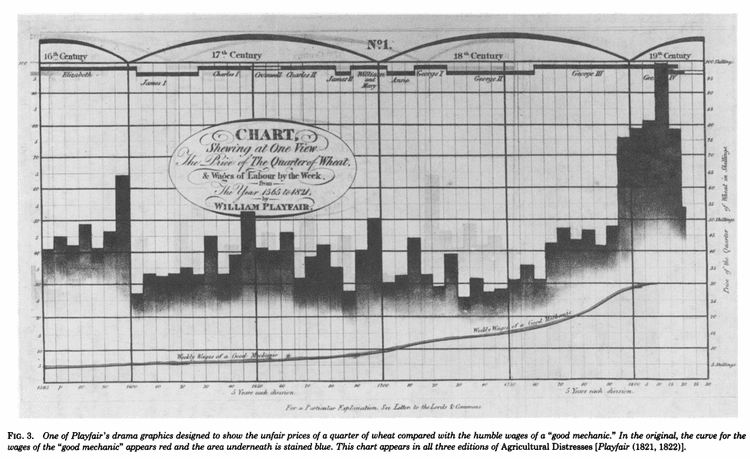
William Playfair invented several types of diagrams: in 1786 the line, area and bar chart of economic data, and in 1801 the pie chart and circle graph, used to show part-whole relations.
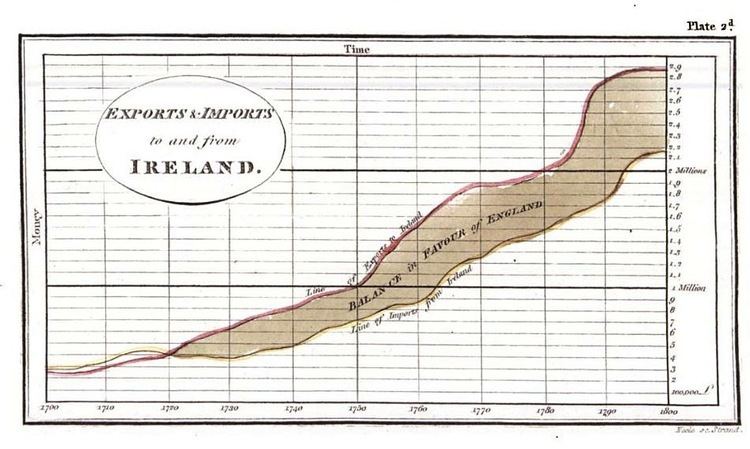
Biography
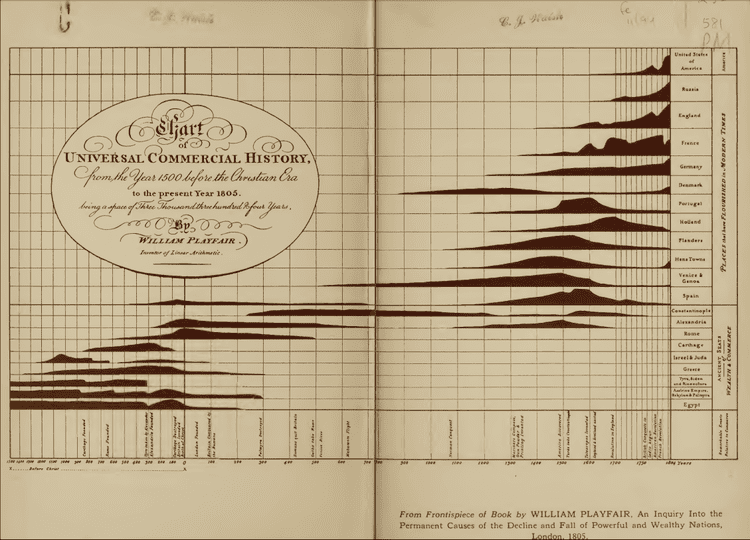
Playfair was born in 1759 in Scotland during the Enlightenment, a Golden Age in the arts, sciences, industry and commerce. He was the fourth son (named after his grandfather) of the Reverend James Playfair of the parish of Liff & Benvie near the city of Dundee in Scotland; his notable brothers were architect James Playfair and mathematician John Playfair. His father died in 1772 when William was 13, leaving the eldest brother John to care for the family and his education. After his apprenticeship with Andrew Meikle, the inventor of the threshing machine, Playfair became draftsman and personal assistant to James Watt at the Boulton and Watt steam engine manufactory in Soho, Birmingham.
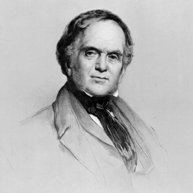
Playfair had a variety of careers. He was in turn a millwright, engineer, draftsman, accountant, inventor, silversmith, merchant, investment broker, economist, statistician, pamphleteer, translator, publicist, land speculator, convict, banker, ardent royalist, editor, blackmailer and journalist. On leaving Watt's company in 1782, he set up a silversmithing business and shop in London, which failed. In 1787 he moved to Paris, taking part in the storming of the Bastille two years later. He returned to London in 1793, where he opened a "security bank", which also failed. From 1775 he worked as a writer and pamphleteer and did some engineering work.
Work
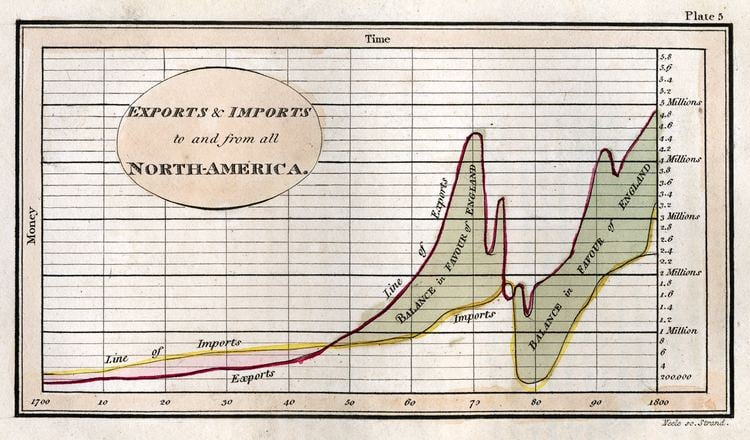
Ian Spence and Howard Wainer in 2001 describe Playfair as "engineer, political economist and scoundrel" while "Eminent Scotsmen" calls him an "ingenious mechanic and miscellaneous writer." It compares his career with the glorious one of his older brother John Playfair, the distinguished Edinburgh professor, and draws a moral about the importance of "steadiness and consistency of plan" as well as of "genius."
Bar chart
Two decades before Playfair's first achievements, in 1765 Joseph Priestley had created the innovation of the first timeline charts, in which individual bars were used to visualise the life span of a person, and the whole can be used to compare the life spans of multiple persons. According to James R. Beniger and Robyn (1978) "Priestley's timelines proved a commercial success and a popular sensation, and went through dozens of editions".
These timelines directly inspired Wiliam Playfair's invention of the bar chart, which first appeared in his Commercial and Political Atlas, published in 1786. According to Beniger and Robyn (1978) "Playfair was driven to this invention by a lack of data. In his Atlas he had collected a series of 34 plates about the import and export from different countries over the years, which he presented as line graphs or surface charts: line graphs shaded or tinted between abscissa and function. Because Playfair lacked the necessary series data for Scotland, he graphed its trade data for a single year as a series of 34 bars, one for each of 17 trading partners".
In this bar chart Scotland's imports and exports from and to 17 countries in 1781 are represented. "This bar chart was the first quantitative graphical form that did not locate data either in space, as had coordinates and tables, or time, as had Priestley's timelines. It constitutes a pure solution to the problem of discrete quantitative comparison".
The idea of representing data as a series of bars had earlier (14th century) been published by Jacobus de Sancto Martino and attributed to Nicole Oresme. Oresme used the bars to generate a graph of velocity against continuously varying time. Playfair's use of bars was to generate a chart of discrete measurements.
Graphics
Playfair, who argued that charts communicated better than tables of data, has been credited with inventing the line, bar, area, and pie charts. His time-series plots are still presented as models of clarity.
Playfair first published The Commercial and Political Atlas in London in 1786. It contained 43 time-series plots and one bar chart, a form apparently introduced in this work. It has been described as the first major work to contain statistical graphs.
Playfair's Statistical Breviary, published in London in 1801, contains what is generally credited as the first pie chart.
Playfair cycle
The following quotation, known as the "Playfair cycle," has achieved notoriety as it pertains to the "Tytler cycle":
:...wealth and power have never been long permanent in any place.
...they travel over the face of the earth,something like a caravan of merchants.On their arrival, every thing is found green and fresh;while they remain all is bustle and abundance,and, when gone, all is left trampled down, barren, and bare.